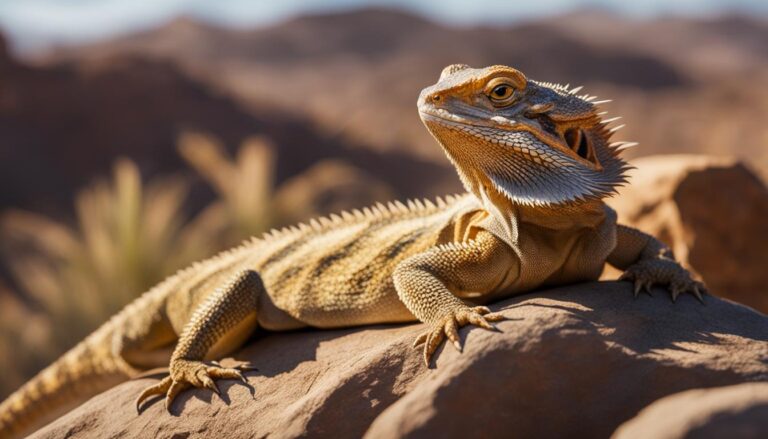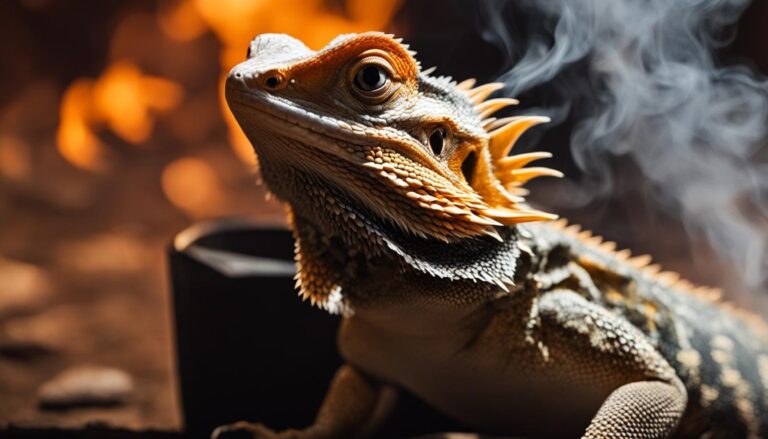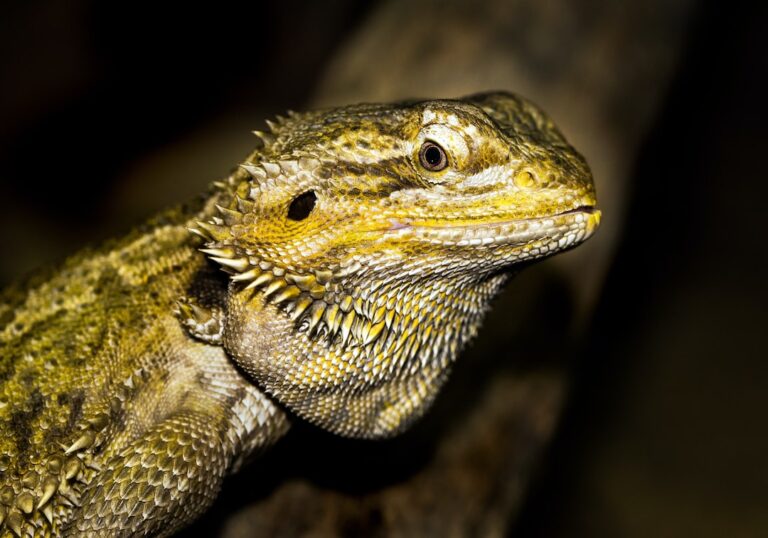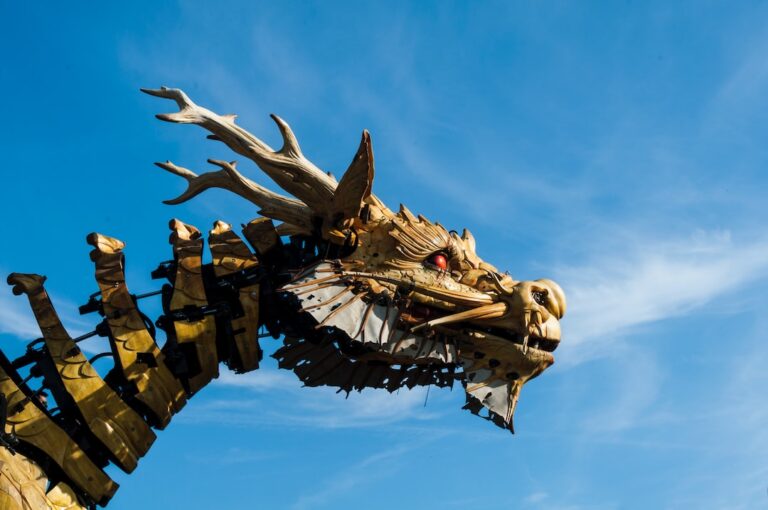What Are Bearded Dragons’ Predators?
Bearded dragons, scientifically known as Pogona, are a type of lizard native to Australia. They are popular pets due to their unique appearance and docile nature. In the wild, bearded dragons inhabit a variety of environments, including deserts, woodlands, and grasslands. Understanding their natural habitat is crucial for pet owners to provide a suitable environment for their bearded dragons.
Bearded dragons are well-adapted to their natural environment. They have specialized features that help them survive in harsh conditions. Their scaly skin helps prevent water loss, and their ability to change color allows them to regulate their body temperature. They also have sharp claws for digging burrows and strong jaws for crushing prey.
Table of Contents
Common Predators of Bearded Dragons in the Wild
In the wild, bearded dragons face numerous predators that pose a threat to their survival. These predators can be categorized into three main groups: birds of prey, snakes, and mammals.
Birds of prey, such as eagles and hawks, are skilled hunters that can spot bearded dragons from high above. They have excellent eyesight and swoop down to catch their prey with their sharp talons. Snakes, on the other hand, use stealth and ambush tactics to capture bearded dragons. They rely on their ability to slither silently and strike quickly to catch their prey off guard. Mammalian predators, such as foxes and dingoes, use a combination of speed and agility to chase down bearded dragons.
The Role of Birds of Prey in Bearded Dragon Predation
Birds of prey play a significant role in the predation of bearded dragons. Their aerial hunting techniques make them formidable predators. Birds such as eagles and hawks have keen eyesight that allows them to spot bearded dragons from great distances. Once they have located their prey, they swoop down with incredible speed and accuracy, using their sharp talons to capture the bearded dragon.
The impact of birds of prey on bearded dragon populations can be significant. They are efficient hunters and can quickly reduce the number of bearded dragons in an area. This can disrupt the balance of the ecosystem and have cascading effects on other species that rely on bearded dragons for food or other ecological services.
Snake Predators and their Impact on Bearded Dragon Populations
Snakes are another common predator of bearded dragons in the wild. They use stealth and ambush tactics to catch their prey. Snakes have a unique advantage over bearded dragons due to their ability to slither silently and strike quickly. They can surprise their prey and overpower them before they have a chance to escape.
The impact of snake predators on bearded dragon populations can be significant, especially in areas where snakes are abundant. Snakes can consume a large number of bearded dragons, leading to a decline in their population. This can disrupt the natural balance of the ecosystem and have negative consequences for other species that rely on bearded dragons for food or other ecological services.
Mammalian Predators and their Hunting Techniques
Mammalian predators, such as foxes and dingoes, also pose a threat to bearded dragons in the wild. These predators use a combination of speed and agility to chase down their prey. They are skilled hunters that can quickly close the distance between themselves and the bearded dragon.
The impact of mammalian predators on bearded dragon populations can vary depending on the abundance of these predators in a particular area. In areas where mammalian predators are abundant, they can have a significant impact on bearded dragon populations, leading to a decline in their numbers. This can have cascading effects on other species that rely on bearded dragons for food or other ecological services.
The Impact of Habitat Destruction on Bearded Dragon Predation
Habitat destruction is a significant threat to bearded dragons and their predators. As human populations continue to expand, natural habitats are being destroyed or fragmented, leading to a loss of suitable habitat for bearded dragons and their predators. This can result in increased predation pressure on bearded dragons as they are forced to inhabit smaller and more vulnerable areas.
The impact of habitat destruction on bearded dragon predation is twofold. Firstly, it reduces the availability of suitable habitat for bearded dragons, making them more vulnerable to predation. Secondly, it disrupts the natural balance of the ecosystem, leading to changes in predator-prey dynamics. This can have cascading effects on other species that rely on bearded dragons for food or other ecological services.
How Bearded Dragons Protect Themselves from Predators
Bearded dragons have developed several defense mechanisms to protect themselves from predators. One of their most well-known defenses is their ability to puff up their throat and display their beard, which gives them their name. This behavior is used to intimidate predators and make themselves appear larger and more threatening.
Bearded dragons also have sharp claws that they can use to defend themselves against predators. They can scratch and bite if they feel threatened or cornered. Additionally, they have the ability to change color, allowing them to blend into their surroundings and avoid detection by predators.
The Role of Human Activity in Bearded Dragon Predation
Human activity can have a significant impact on bearded dragon predation. Activities such as habitat destruction, pollution, and the introduction of non-native species can disrupt the natural balance of ecosystems and increase predation pressure on bearded dragons.
Habitat destruction, in particular, is a major threat to bearded dragons and their predators. As natural habitats are destroyed or fragmented, bearded dragons are forced into smaller and more vulnerable areas, making them more susceptible to predation. Pollution can also have indirect effects on bearded dragon predation by reducing the availability of prey or altering the behavior of predators.
The Importance of Understanding Bearded Dragon Predators for Pet Owners
Understanding bearded dragon predators is crucial for pet owners to provide a safe and suitable environment for their pets. By knowing the predators that pose a threat to bearded dragons, pet owners can take steps to protect their pets from harm.
For example, pet owners can ensure that their bearded dragons are housed in secure enclosures that are predator-proof. This can include using wire mesh to prevent birds of prey from accessing the enclosure and ensuring that there are no gaps or holes that snakes or other predators can enter through.
Conservation Efforts to Protect Bearded Dragons from Predation
Conservation efforts are underway to protect bearded dragons and their predators from the threats they face. These efforts include habitat restoration, captive breeding programs, and public education campaigns.
Habitat restoration aims to restore and protect the natural habitats of bearded dragons and their predators. This can involve reforestation, removing invasive species, and implementing measures to reduce habitat destruction.
Captive breeding programs play a crucial role in conserving bearded dragons and their predators. These programs aim to breed and release individuals back into the wild to boost population numbers and genetic diversity.
Public education campaigns are essential for raising awareness about the threats facing bearded dragons and their predators. By educating the public about the importance of conservation and responsible behavior, these campaigns can help reduce the impact of human activity on these species.
Conclusion:
Understanding bearded dragon predators is crucial for their conservation and for providing a safe environment for pet bearded dragons. Birds of prey, snakes, and mammals all pose a threat to bearded dragons in the wild, and habitat destruction further exacerbates this predation pressure. Bearded dragons have developed defense mechanisms to protect themselves, but human activity can disrupt the natural balance of ecosystems and increase predation pressure.
Conservation efforts, including habitat restoration, captive breeding programs, and public education campaigns, are essential for protecting bearded dragons and their predators. By supporting these efforts and practicing responsible behavior, we can help ensure the survival of these unique and fascinating creatures.
If you’re interested in learning about the predators of bearded dragons, you might also want to check out this related article on reptilefriend.com: “Do Iguanas Kill Snakes?” This article explores the fascinating interactions between iguanas and snakes, shedding light on whether iguanas pose a threat to their slithery counterparts. Click here to read more about this intriguing topic.





